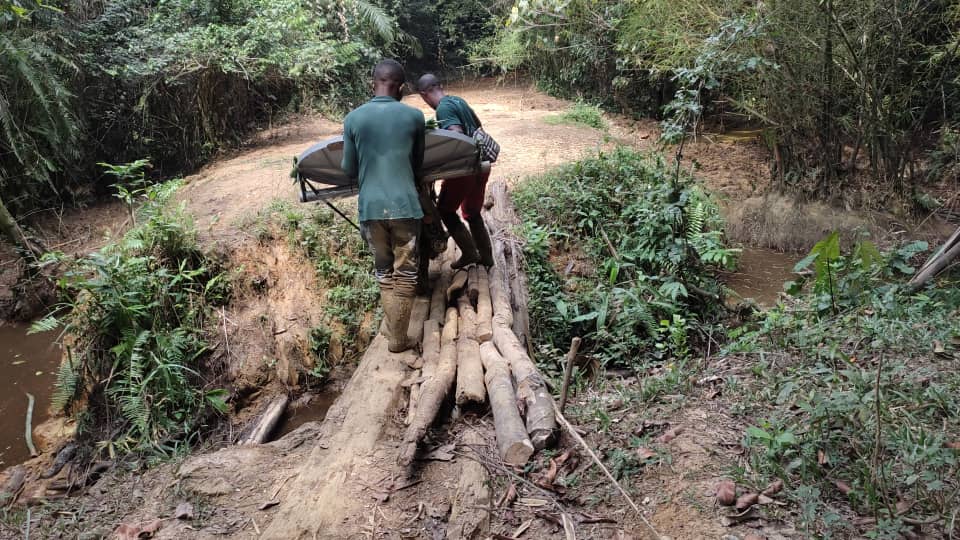The Connectivity Transformation has Begun and Legacy Networks Won’t be the Future Solution
Organizations in nearly every sector are looking to increase operating efficiencies and improve processes. Whether for supporting advanced analytics, the Internet of Things, autonomous operations or connected continuity across multiple sites, the digital transformation is rapidly underway. This transition is perhaps no more evident than in the demand for ubiquitous connectivity to enable data-hungry applications. And it will likely drive greater need for solutions that deploy high-throughput Land Mobile networks.
But legacy networks for Land Mobility, including mobile satellite services (MSS) and terrestrial services, lack the capacity and coverage to meet evolving customer requirements. The digital 
Further, existing service plans for legacy networks tend to be costly and lack the flexibility demanded by customers.
“Demand for high throughput satellite capacity for land mobility is expected to reach 24 Gbps by 2027, up from less than 1 Gbps in 2017[1].”Without access to the optimal mix of bandwidth, coverage and pricing, end users will spend a lot of money on poor connectivity and gaps in coverage. This means companies in industries like rail and mining as well as first responders and humanitarian aid organizations may find it increasingly problematic to meet their needs.
In contrast, high-throughput satellite (HTS) services reach beyond the capabilities of legacy land mobility services and also augment terrestrial wireless services when used in combination, creating a hybrid network of networks.
Below we illustrate how the challenges created by bandwidth, scalability and high-cost of legacy satellite solutions constrain end users’ productivity, response times and efficiencies.
1. Difficulty meeting rising bandwidth requirements
Operational processes form the core of any organization. In the digital age, this means that the execution of these processes often requires a reliable, redundant, high-speed network connection to remain agile and responsive.
Existing satellite networks can only deliver data rates in the hundreds of Kbps. That may be enough for basic applications, but it does not provide the necessary high-data rate connections that enable more complex and distributed applications. Without the addition of an HTS land mobility solution, end users must rely on a patchy, unreliable network, if anything at all.
On the other end of the communications spectrum, terrestrial infrastructures face a greater risk of downtime due to natural disasters. Further, cellular networks remain expensive to build and maintain, restricting their availability in remote or temporary locations.
With limited access to a subpar network, these bandwidth-constrained users face a host of problems. Lacking the optimal mix of bandwidth and network coverage limits use of critical applications when needed most, such as:
- Streaming live videos for situational awareness and enhanced security
- Providing support for crew safety and welfare in remote areas
- Using advanced applications for autonomous operations
Mining companies that rely on high definition surveying for exploration in remote regions will be severely limited without robust broadband access.
Solving for these critical needs requires high-speed, easy-to-deploy connectivity solutions that end users can access anywhere without needing a technician or engineer to set up. Land mobility Solution Partners leveraging a redundant, multi-layered, HTS network to augment the capabilities of legacy satellite and cellular networks provide just that.
2. Limited reach and inability to scale for mission-critical needs
The limited reach of terrestrial networks may prevent users from connecting when they need it most. These networks are designed to cover high-population areas, but lack reach into many remote and rural locations. Low-data rate satellite services are simply unable to scale to meet the demands of many data-hungry, mission-critical applications. Extending services into these locations are critical for disaster response efforts but equally important for many industries like freight rail that often require mobile connectivity far away from densely populated areas.
Further, some of the networks that are available in non-urban areas are running on outdated technology that was not designed to meet the needs of today’s digital world. From a user standpoint, a lot has changed. From an enterprise standpoint, the change has become even more pronounced as outdated network infrastructure inhibits the effortless scalability necessary to meet ever-growing data demands.
Industries working in remote and unconnected locations will find themselves significantly restricted in how and where they can function. This greatly hinders operations, productivity and growth. For example, first responders deploying in hard-to-reach or hostile areas might lack the infrastructure necessary to facilitate logistics or transmit medical data, reducing response times.
Creating a network of networks, hybrid solution by incorporating HTS connectivity into existing services provides end users with the redundancy and easy-to-deploy communication options necessary to quickly scale operations where and when they’re needed most.
3. Rigid and Costly Data Packages
Despite the low-data rates of legacy satellite networks, existing services and data plans are still costly. They also lack the flexibility to address the varied usage patterns and use cases of organizations across the many Land Mobile market segments.
Traditional monthly subscriptions with a ‘use it or lose it’ data allowance don’t fit the needs of every user. Services will be more accessible when providers offer more flexible packages. This allows service providers to address a range of requirements from fixed monthly data budgets, to seasonal and occasional use – or for those with a large fleet of connected assets.
A lack of flexibility leaves organizations in just as rigid of a position as the service plan. Traditional service options are too limited to meet their needs while staying within their connectivity budgets available for a particular project or location. Without the increased reach and reliability provided by an HTS Land Mobile service, users may experience network disruptions that can be detrimental to daily operations. And in some cases, it can make the difference between life and death for first responders in a disaster zone.
Moving forward, organizations will face even greater hurdles when using legacy Land Mobile networks, as these end users will only continue to require more bandwidth, better coverage and more affordable costs. The inclusion of an HTS Land Mobile network to an organization’s connectivity portfolio ensures that its end users will have the bandwidth and coverage necessary to deliver lasting value.
In the coming months we’ll further explore the current digital transformation underway, as well as what’s in store for the future of connectivity. Check back soon!
[1] Source: NSR, Land Mobile via Satellite, 6th Edition, December 2018.






















